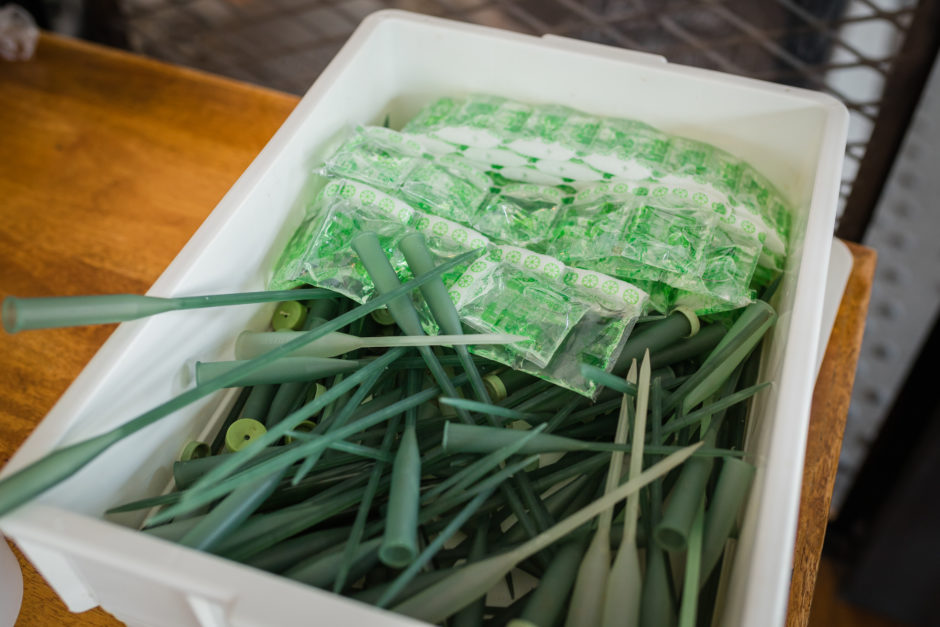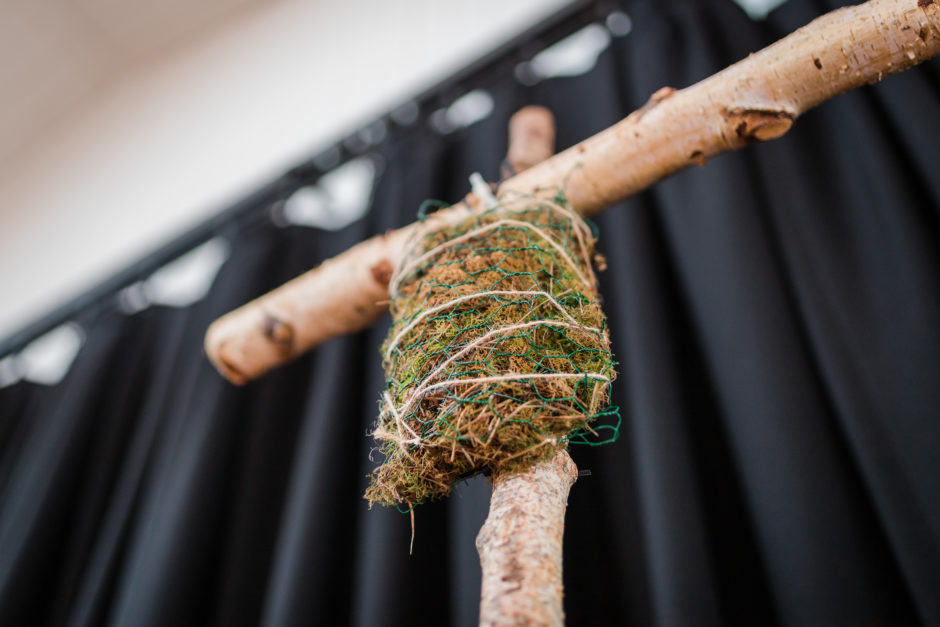When floral foam was invented in the U.S. back in 1954, it quickly took over the floristry industry, becoming a florist’s best friend. A block of green, sponge-like foam that not only holds flowers in place but keeps them hydrated and easy to transport? It was a dream come true.
Fast-track to the present day, and floral foam has become something of a controversial topic among florists.
Floral foam is extremely harmful to the environment.
Each foam block is equal to ten plastic bags, and they are not biodegradable or recyclable. They end up as the microplastics that are floating around in our ocean.
Floral foam also contains elements that are considered to be carcinogenic, like formaldehyde, carbon black and barium sulphates. While the extremely small quantities found in single blocks are not harmful in small doses, long term exposure could cause side effects.
The hard part is, floral foam is so useful for florists. It’s lightweight, easy to cut and mould, and transporting it is a breeze. A 2019 study by RMIT University of 1200 florists around the world found that two-thirds of florists used floral foam, and 72% poured the foam wastewater down the drain.
So what alternatives are there?
Here are a few that we like to use at Bloom.
Chicken Wire

Chicken wire is a common alternative for floral foam, given that it’s very easy to use. The mesh holes are perfect for slotting flowers into, and if you leave the leaves on your stems, the wire will catch on these and more firmly hold your flowers in place. Chicken wire can even be wound around arches or larger structures to act as a base for grand arrangements like hanging or table arrangements. If you’re creating an arrangement in a vase, you can roll the mesh into a ball and stick it into the container. This way your flowers will stay still and can still reach the water. Chicken wire is both reusable and planet-friendly, so it’s easy to see why it’s a popular choice.
Kenzans/Flower Frogs
Kenzans (also known as flower frogs) are essentially metal discs with pins that sit in the base of a vase, originally used in the traditional Japanese art of flower arrangement known as Ikebana. Flowers are pressed onto the pins, where the pins hold them in place within the arrangement. Pressing the flower stem onto the pin opens up the base and lets the flower absorb water more quickly. Sure Stik is commonly used to anchor the kenzan within your vase/vessel. Kenzans are super easy to clean, and most importantly, they’re good for the environment.
Water Vials

Water vials are small plastic tubes (they look a bit like test tubes) which you fill with water and insert your flower stem into to keep it hydrated. Most water vials will have a flexible rubber cap that fits tight around the stem so there’s no water leakage. Often florists will use these in conjunction with chicken wire, so the flowers stay in place while also staying hydrated.
Water vials come in all different sizes, and most importantly, they can be reused as many times as you like. As long as you wash and clean them well between uses so there’s no bacteria growth, water vials can be a much more eco-friendly approach to floristry. For delicate flowers that need a little extra love and care, you can add a tiny amount of flower food to the vial water to give them a boost. If you want an option where this is done for you, you can try FLOSPAC’s.
Moss

Moss can easily be utilised to help hold your flowers in place, when used with other materials. Use compacted moss inside chicken wire to hold flowers in place for an installation, or grab those old floral foam cages from past events––you can place moss or even wood wool inside as a sustainable alternative for your event florals! You can usually grab moss from a wholesaler or online from speciality garden retailers. If you can’t get your hands on live moss, feel free to grab some Sphagnum Moss from Bunnings––that works too!

Wood Wool
While wood wool is mostly used for packing wine, food and other more fragile items for postage, it can also be a useful tool for flower arranging. It can absorb water to a certain degree, and you can scrunch it up inside a vase to create a firm base to insert flowers into. It also looks good, adding that rustic, farm-fresh feel to your arrangements.
Wood wool is made of shredded timber fibres, which makes it entirely eco-friendly, compostable and biodegradable.
Pebbles/Rocks
Placing river pebbles or rocks in a vase, vessel or pot is another good way of keeping your flowers in place. As long as they’re packed in tightly, the flowers won’t be moving very far. You can also pour the pebbles/rocks in around the finished arrangement to keep the flowers from shifting. The other benefit of using pebbles is that they can add a decorative touch to the overall arrangement, especially if the vase is clear. Being a natural product, pebbles are obviously able to be reused and are a great eco-friendly alternative to foam.
There are so many alternatives out there to harmful floral foam, so we really encourage you to get creative and look at other options when it comes to creating your arrangements.
At Bloom, we’re all about sustainability in floristry, and educating future florists how to run a sustainable floristry business. If you’re interested in learning more about how to incorporate sustainable practices into your floristry, check out the courses our sister school, Thrive Flower School, is running!
Every course addresses the importance of sustainable practices and how to integrate these into your business.
